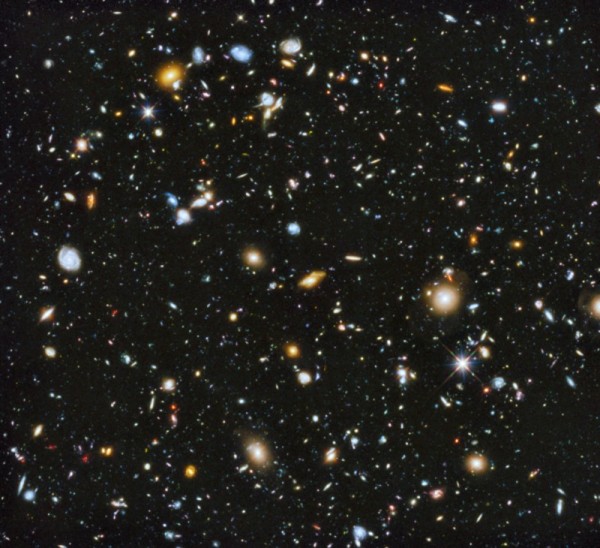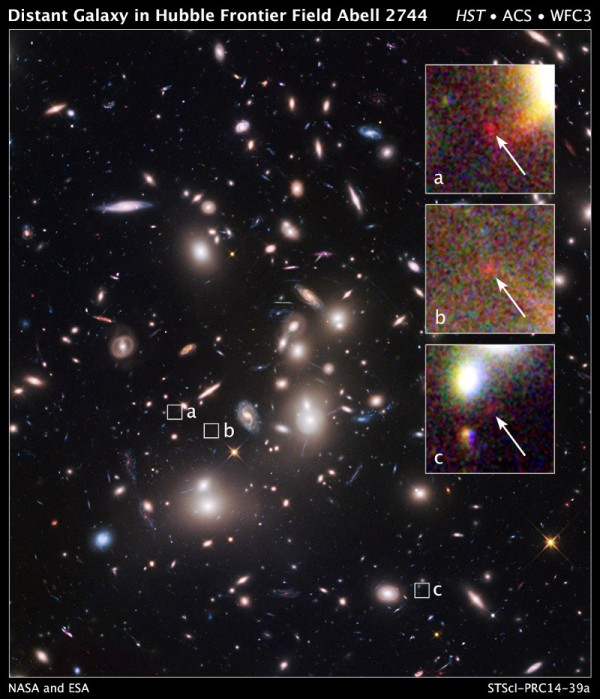When you think of the Hubble Space Telescope, perhaps you think of what's touted as its most major feat of all: peering off into deep, dark space, collecting light, and discovering the plethora of distant galaxies laying billions of light years beyond our own.
 The Hubble Space Telescope’s Ultra Deep Field. Prior to the Fronier Fields program, this was the deepest look into the Universe available to human kind. Credit: NASA, ESA, H. Teplitz, M. Rafelski (IPAC/Caltech), A. Koekemoer (STScI), R. Windhorst (Arizona State University), and Z. Levay (STScI).
The Hubble Space Telescope’s Ultra Deep Field. Prior to the Fronier Fields program, this was the deepest look into the Universe available to human kind. Credit: NASA, ESA, H. Teplitz, M. Rafelski (IPAC/Caltech), A. Koekemoer (STScI), R. Windhorst (Arizona State University), and Z. Levay (STScI).
It's a spectacular sight and a spectacular story, and it's allowed us, among other things, to estimate just how many galaxies there are in the known Universe to greater accuracy than ever before. But thanks to a combination of factors, including gravitational lensing, Hubble has beaten its own record.
 Image credit: NASA, ESA, A. Zitrin (California Institute of Technology), and J. Lotz, M. Mountain, A. Koekemoer, and the HFF Team (STScI).
Image credit: NASA, ESA, A. Zitrin (California Institute of Technology), and J. Lotz, M. Mountain, A. Koekemoer, and the HFF Team (STScI).
Come get the whole story on the 25th anniversary of Hubble's launch, thanks to James Bullock!
- Log in to post comments

I am excited about the JWT but will really miss the upgradeability of Hubble. The optics were fixed in 1993. The original ACS camera and STIS cameras have both been replace with new and better hardware. They just added a new 3rd Gen Wide Field Camera, fixed all the servos and batteries. Hubble is now 90 times more powerful than originally designed to be. It now resolves 900 galaxies where the original instrumentation could only see 10.
JWT is a nice piece of hardware for sure, but there is something to be said for being able to tinker under the hood every so often. Long live Hubble.
This is really puzzling for me.
How can we be sure the three images are from same location? How does one predict where to look for possible deflected images of a same galaxy?